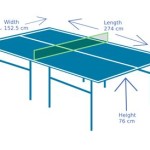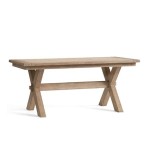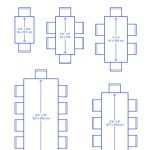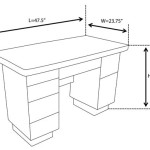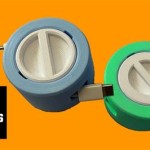How To Get Melted Candle Wax Off A Tablecloth
Melted candle wax on a tablecloth is a common occurrence, especially during events that incorporate candles for ambiance. Although unsettling to witness the molten wax solidify onto the fabric, removing it is generally straightforward, provided the appropriate methods are employed. This article provides a comprehensive guide to effectively remove candle wax from a tablecloth, encompassing various techniques and considerations to minimize damage to the fabric.
Method 1: Scraping Away Excess Wax
The initial step in removing candle wax from a tablecloth is to address the excess buildup. Allowing the wax to cool and harden completely is crucial before attempting to scrape it. Prematurely attempting to remove the wax while still pliable will only smear it further into the fabric fibers, making the subsequent cleaning process more complex and potentially damaging.
Once the wax has solidified, several tools can be used to carefully scrape it away. A dull knife, a spoon, or even the edge of a credit card can be effective. The key is to apply gentle pressure and work from the outside edges of the wax towards the center. This prevents the wax from spreading further and minimizes the risk of damaging the underlying fabric.
The motion should be a lifting action rather than a forceful scraping. The goal is to dislodge the hardened wax without pulling or tearing at the tablecloth fibers. Patience is paramount during this stage, as rushing the process can lead to damage. If the wax is particularly thick, it may be necessary to repeat the scraping process multiple times, removing a small amount of wax with each pass.
Following the scraping process, loose wax fragments will likely remain on the tablecloth. A vacuum cleaner with a brush attachment can be used to remove these fragments. Alternatively, a lint roller or a piece of tape can be gently applied to the affected area to pick up the remaining particles. This ensures that no residual wax is present before proceeding to the next cleaning stage.
Method 2: Applying Heat to Absorb Remaining Wax
After removing the bulk of the hardened wax, a stain, discoloration, or residual wax residue often persists on the tablecloth. Heat is frequently employed to loosen and absorb the remaining wax. Several variations of this method exist, each with its own advantages and precautions.
One common technique involves using an iron. Place the tablecloth, wax-stained side down, on an ironing board. Cover the affected area with a clean, absorbent material such as paper towels, brown paper bags, or a clean cotton cloth. The chosen material should be porous enough to absorb the melted wax without transferring any dye or fibers to the tablecloth.
Set the iron to a low to medium heat setting, without steam. Too much heat could damage the fabric, while steam could cause the stain to set more permanently. Gently iron over the paper towel or cloth, allowing the heat to melt the remaining wax. The absorbent material will soak up the melted wax as the iron passes over it.
Periodically check the paper towel or cloth to observe the amount of wax being absorbed. Replace it with a clean section when it becomes saturated with wax. This ensures that the wax is being effectively removed from the tablecloth and not simply being redistributed. Repeat the ironing process until no more wax is being transferred to the absorbent material.
Another heating method involves using a hairdryer. This technique is similar to using an iron, but it allows for more targeted heat application and can be useful for delicate fabrics. Place the tablecloth, wax-stained side down, on a clean surface. Cover the affected area with a clean, absorbent material.
Direct the hairdryer's airflow onto the absorbent material, focusing on the area directly over the wax stain. The heat from the hairdryer will melt the wax, which will then be absorbed by the material. Continue to move the hairdryer back and forth to ensure even heating and prevent scorching the fabric. Regularly check and replace the absorbent material as it becomes saturated with wax.
Regardless of the heat source chosen, it is important to exercise caution and avoid overheating the fabric. Regularly checking the tablecloth's temperature and adjusting the heat setting accordingly can prevent damage. It is also advisable to test the chosen method on an inconspicuous area of the tablecloth before treating the entire stain.
Method 3: Addressing Remaining Stain and Cleaning
Even after the wax has been removed, a stain or discoloration may remain on the tablecloth, particularly if the wax was colored or contained dyes. Treating this residual stain is crucial to restoring the tablecloth to its original appearance. Various stain removal methods can be used, depending on the type of fabric and the nature of the stain.
For general stains, a mild detergent or laundry stain remover can be effective. Apply a small amount of the chosen cleaning agent directly to the stained area. Gently rub the fabric together to work the cleaning agent into the fibers. Allow the cleaning agent to sit for a few minutes, but avoid letting it dry completely, as this can set the stain.
Rinse the treated area thoroughly with cool water to remove the cleaning agent. Blot the area with a clean cloth to absorb excess water. Avoid rubbing the fabric vigorously, as this can damage the fibers and spread the stain. If the stain persists, repeat the cleaning process or try a different stain removal method.
For more stubborn stains, such as those caused by colored wax or dyes, stronger stain removers may be necessary. However, it is essential to exercise caution when using these products, as they can potentially damage or discolor the fabric. Always test the stain remover on an inconspicuous area of the tablecloth before applying it to the entire stain.
If the tablecloth is made of a delicate fabric, such as silk or linen, consider taking it to a professional dry cleaner for stain removal. Professional dry cleaners have access to specialized cleaning agents and techniques that can effectively remove stains without damaging the fabric. This is often the safest option for valuable or delicate tablecloths.
After treating the stain, launder the tablecloth according to the care instructions on the label. This will remove any remaining cleaning agents and ensure that the tablecloth is thoroughly cleaned. Check the tablecloth for any remaining stains after laundering. If any stains persist, repeat the stain removal process before drying the tablecloth. Drying a stained tablecloth can permanently set the stain, making it much more difficult to remove.
Once the tablecloth is clean and free of stains, iron it if necessary to remove any wrinkles. Store the tablecloth in a clean, dry place to prevent it from becoming stained or damaged. Taking proper care of the tablecloth will ensure that it remains in good condition for years to come.
Specific fabric types might require altered approaches. For instance, delicate fabrics like silk or lace benefit from gentler heat application, potentially relying on a hairdryer held at a greater distance or avoiding direct ironing altogether. Pre-testing any cleaning solution on an unseen area is always advisable. Similarly, colored waxes may require more aggressive stain treatments after wax removal, possibly using enzyme-based detergents known for breaking down organic stains or consulting a professional cleaner for specialized care.
The colorfastness of the tablecloth is another crucial consideration. Some fabrics, especially those with vibrant colors or delicate dyes, may be more susceptible to fading or discoloration during the cleaning process. Testing the chosen cleaning method on an inconspicuous area of the tablecloth before treating the entire stain is essential to avoid unintended damage. If any color loss or discoloration occurs, consider seeking professional cleaning assistance.
Preventative measures can significantly reduce the likelihood of future wax stains. Using candle holders that effectively collect dripping wax is a practical approach. Additionally, placing protective mats or coasters underneath candles can further minimize the risk of wax spills reaching the tablecloth. Being mindful of candle placement and avoiding situations where they are easily knocked over can also help prevent accidents.

How To Easily Remove Candle Wax From A Tablecloth

How To Get Candle Wax Out Of Your Tablecloth

How To Remove Candle Wax From A Tablecloth Nicole Gibbons Style

Removing Wax From Tablecloth Effective Tips And Tricks Creative Homemaking

Remove Candle Wax From Fabric New England

How To Remove Melted Wax Out From Fabric Real Simple

How To Get Wax Out Of Fabric Candle Removal Tutorial

How To Remove Melted Wax Out From Fabric Real Simple

How To Get Wax Out Of Tablecloth 7 Easy Fast Ways Tablecoversnow Com

How To Remove Candle Wax From A Tablecloth

